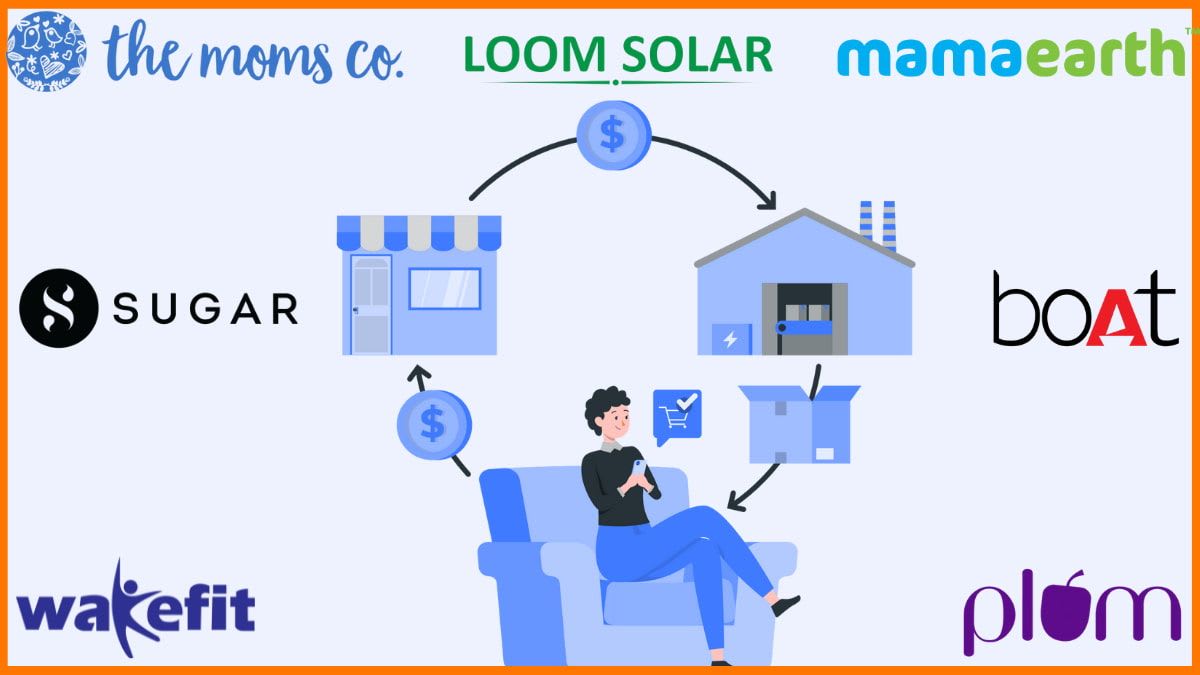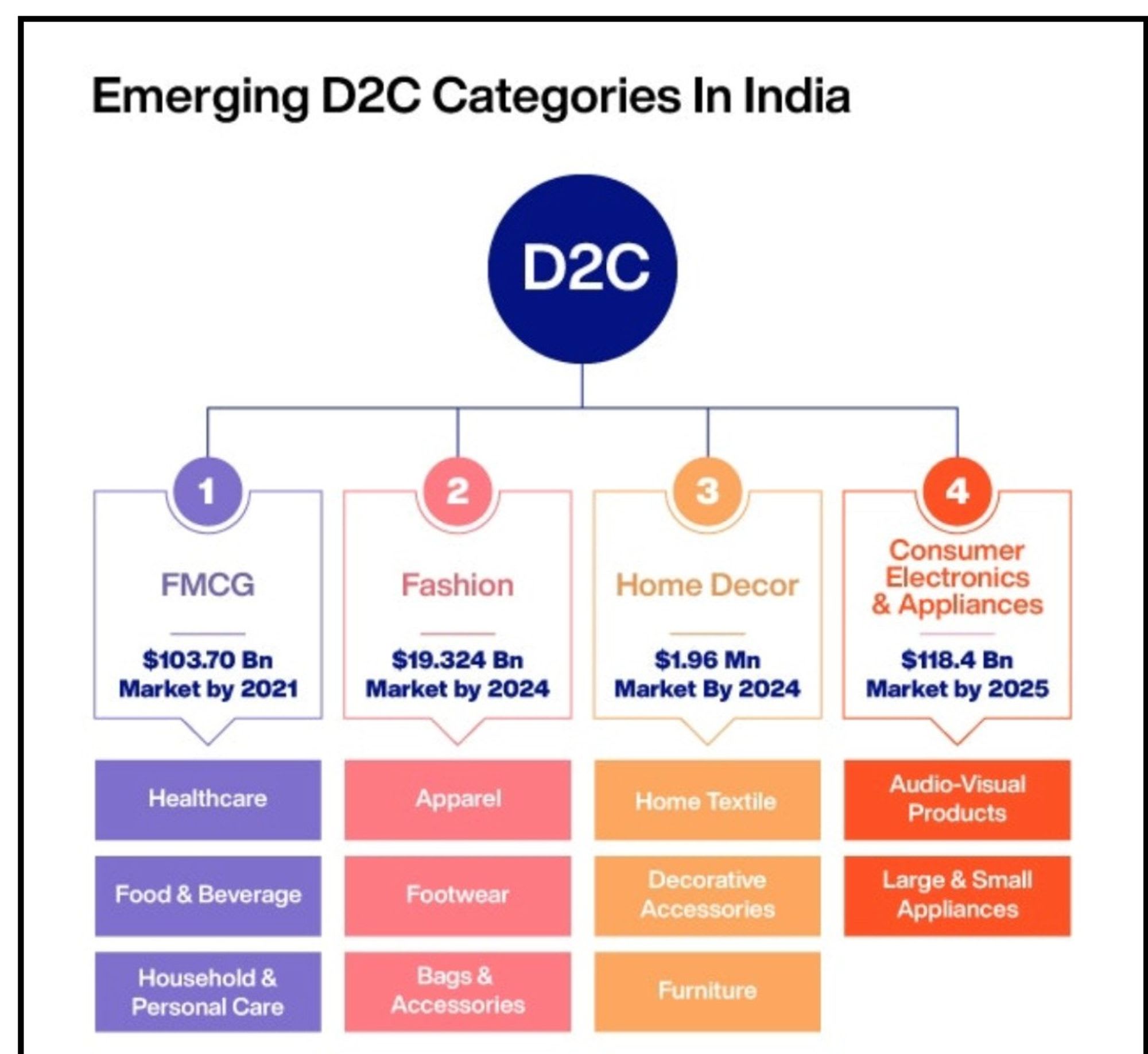Crafting Your D2C Branding Strategy for Maximum Impact: Insights and Examples from India

Table of Contents
- I. Introduction
- II. What is D2C branding?
- III. What is the D2C strategy?
- Identify your target audience
- Develop your brand positioning
- Create a compelling brand story
- Build a strong brand identity
- Focus on customer experience
- What is a D2C example in India?
- Conclusion
- FAQ:
I. Introduction
In today's digital age, the direct-to-consumer (D2C) model is gaining popularity among businesses of all sizes and industries. D2C branding is a strategic approach that enables companies to sell products or services directly to consumers through their own channels, such as websites or mobile apps, without the involvement of intermediaries. In this article, we will explore the world of D2C branding and provide insights on crafting a successful D2C strategy. We will cover the following topics:
What is D2C branding and why is it important?
How does D2C branding differ from traditional branding?
Key components of a D2C branding strategy
Different marketing channels for D2C brands
What makes a D2C brand successful?
A real-life example of a successful D2C brand in India
Lessons learned from the example
II. What is D2C branding?
D2C branding is a marketing strategy that allows businesses to reach customers directly through their own channels. Unlike traditional branding, where companies rely on intermediaries such as wholesalers, distributors, or retailers to sell their products, D2C branding enables businesses to take control of their sales and marketing processes, which results in better customer relationships and higher profit margins.
The benefits of D2C branding include:
Direct access to customer data, which helps businesses understand their customers' needs and preferences and make data-driven decisions.
Flexibility and agility, as businesses can easily test and optimize their products, marketing messages, and pricing strategies based on customer feedback.
Lower costs, as businesses can eliminate the middlemen and keep more of the profits for themselves.
Greater control over the customer experience, as businesses can design their own channels and interactions with customers to match their brand values and personality.
However, D2C branding also comes with some challenges, such as the need for a strong online presence, the requirement for a robust logistics and fulfillment infrastructure, and the risk of channel conflict with existing partners.
III. What is the D2C strategy?
To create a successful D2C branding strategy, businesses need to consider the following key components:
preferences, and pain points. Use this information to create messaging that resonates with them and speaks to their specific needs.
Brand identity: Develop a strong brand identity that reflects your values, mission, and unique selling proposition. This includes your brand name, logo, color scheme, and overall visual identity.
Product offering: Offer products that are unique, high-quality, and aligned with your target audience's needs and preferences. This will help you stand out in a crowded market and build a loyal customer base.
User experience: Provide a seamless user experience across all touchpoints, including your website, social media, customer service, and shipping. This includes making the buying process as easy as possible and providing excellent customer support.
Marketing channels: Identify the most effective marketing channels for reaching your target audience, such as social media, email marketing, or influencer partnerships. Develop a comprehensive marketing strategy that leverages these channels to build brand awareness, attract new customers, and drive sales.

Identify your target audience
The first step in crafting your D2C branding strategy is identifying your target audience. This involves understanding who your ideal customers are, what their needs and pain points are, and how your product or service can solve their problems. Conducting market research and gathering customer feedback can help you gain valuable insights into your target audience.
Develop your brand positioning
Once you have a clear understanding of your target audience, it's time to develop your brand positioning. This involves defining your unique selling proposition (USP) and how you differentiate yourself from your competitors. Your brand positioning should be communicated consistently across all touchpoints, from your website to your social media channels.
Create a compelling brand story
A compelling brand story is essential for building an emotional connection with your audience. Your brand story should communicate who you are, what you stand for, and why you do what you do. This can help you establish trust and credibility with your audience and differentiate yourself from your competitors.
Build a strong brand identity
Your brand identity is more than just your logo and colour scheme. It includes all the visual and sensory elements that make up your brand, such as your packaging, website design, and product photography. Building a strong brand identity that resonates with your audience can help you build brand recognition and loyalty.
Focus on customer experience
In the D2C model, the customer experience is everything. From the moment a customer lands on your website to the post-purchase follow-up, every touchpoint should be designed with the customer in mind. Providing exceptional customer service and creating a seamless, enjoyable shopping experience can help you build a loyal customer base and generate positive word-of-mouth.
Leverage social media and influencer marketing Social media and influencer marketing can be powerful tools for building brand awareness and driving sales in the D2C space. By partnering with influencers in your niche and creating engaging social media content, you can reach new audiences and build a community around your brand.
Use data to drive your decisions Data should be at the core of your
D2C branding strategy
. By tracking key metrics such as website traffic, conversion rates, and customer feedback, you can make data-driven decisions that help you optimize your branding and marketing efforts.
Continuously iterate and improve The D2C space is constantly evolving, and your branding strategy should evolve with it. Continuously collecting customer feedback, testing new marketing channels, and iterating on your branding can help you stay ahead of the competition and continue to grow your business.
In conclusion, crafting a successful D2C branding strategy requires a deep understanding of your target audience, a compelling brand story, a strong brand identity, a focus on customer experience, and the ability to leverage data to drive your decisions. By following these best practices and continuously iterating and improving, you can build a strong and sustainable D2C brand that resonates with your audience and drives long-term success.
What is a D2C example in India?

India has seen a surge in D2C brands in recent years, with many emerging as successful players in the market. Here are some examples:
Mamaearth:
Mamaearth
is a D2C brand that offers natural and toxin-free baby and beauty products. The brand has gained popularity for its sustainable and eco-friendly products.
boAt:
boAt
is a D2C brand that offers audio products such as headphones, earphones, and speakers. The brand has been successful in capturing the Indian market with its trendy and affordable products.
Wow Skin Science: Wow Skin Science is a D2C brand that offers personal care and wellness products made with natural ingredients. The brand has been successful in building a loyal customer base through its effective products and engaging marketing campaigns.
Conclusion
D2C branding and strategy have become increasingly important for businesses looking to establish a strong online presence and connect with customers. By identifying their target audience, building a strong brand, and creating personalized experiences, businesses can differentiate themselves in a crowded market and build lasting customer relationships. With the rise of e-commerce and the changing consumer landscape, D2C brands are set to continue to grow in importance and relevance.
FAQ:
Are you looking to start your own D2C brand? Look no further than StoreBud! Our platform makes it easy to launch your online store in just 2 minutes. With customizable templates and easy-to-use tools, you can create a beautiful and functional website to showcase your products and build your brand. Plus, with our built-in marketing and analytics features, you can reach more customers and track your success. Don't wait – sign up for StoreBud today and start selling your products online!
Q. What is the difference between D2C and traditional retail?
A.D2C brands sell directly to consumers through their own websites or physical stores, bypassing traditional retail channels like brick-and-mortar stores or third-party marketplaces. This allows them to have more control over the customer experience and often results in a closer relationship with their customers.
Q. What are some examples of successful D2C brands?
A. Some well-known D2C brands include Warby Parker, Casper, Glossier, and Dollar Shave Club.
Q. How do D2C brands promote their products?
A.D2C brands often use a combination of digital marketing tactics such as social media advertising, email marketing, influencer partnerships, and search engine optimization (SEO) to promote their products and reach their target audience.
Q. Is D2C branding suitable for all types of products?
A. While D2C branding can be effective for many types of products, it may not be suitable for all. Products that require a physical touch or in-person interaction may not be a good fit for D2C branding.
Q. What are some challenges of implementing a D2C strategy?
A. Some challenges of implementing a D2C strategy include the need for a significant initial investment in building and maintaining a website or physical store, the need to establish a brand from scratch, and the potential for increased competition from other D2C brands.